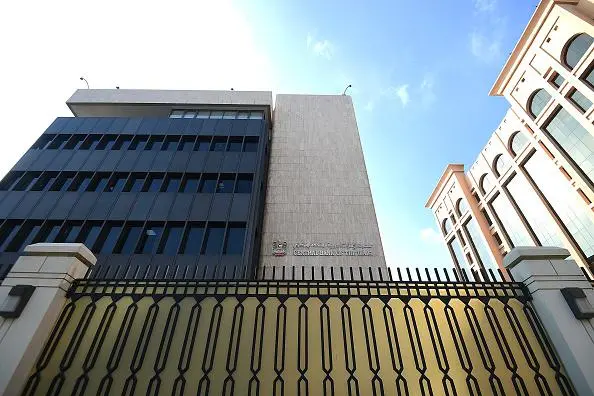PHOTO
While the top UAE banks reported a peripheral increase in profitability, the outlook for the domestic banking sector still remains subdued as a result of the weakened after-effects of Covid-19, in addition to low oil prices, a report said.
While the top UAE banks reported a peripheral increase in profitability, the outlook for the domestic banking sector still remains subdued as a result of the weakened after-effects of Covid-19, in addition to low oil prices, and the postponement of Expo 2020, a report said.
Moreover, the low interest environment, along with a possible increase in impairments, is expected to further weigh on profitability, said leading global professional services firm Alvarez & Marsal (A&M) in its latest UAE Banking Pulse for Q2 2020.
The report reveals that the top 10 UAE banks posted a 21.2% jump in their net profits for the April-June quarter, as a result of lower provisioning and increased cost efficiency. Like many banks globally, the UAE’s top lenders are likely to focus more on improving their efficacy in the coming period as a challenging operating environment demands increased efforts toward cost optimisation.
Despite challenging market conditions, the banks witnessed a fringe surge in loans and advances, and deposit growth. This has added liquidity in the banking system.
Lenders witnessed a considerable contraction in net interest margins (NIM) in the second quarter due to many factors such as the shift to the marginal cost of funds-based lending rate, and an all-time low interest rates.
Alvarez & Marsal’s UAE Banking Pulse examines the data of the10 largest listed banks in the UAE, comparing the second quarter of 2020 (Q2 2020) against the previous quarter (Q1 2020).
The prevailing trends identified for Q2 2020are as follows:
• Loan and advances (L&A) and deposit growth improved marginally in Q2’20 despite a tough operating environment. Total L&A grew 1% QoQ and deposits 1.1% at a slightly better rate in Q2’20, despite Covid-19 lockdowns and low oil prices. Dubai Islamic Bank outperformed its top peers with double-digit L&A growth of 11%, while Mashreq Bank outperformed its top peers on deposit growth with 11%. Loans to deposit ratio (LDR) remained broadly unchanged at 87.7%.
• Operating income was impacted for the second consecutive quarter as all income streams weakened. The operating income declined by 9.2% QoQ, on the back of reduced net interest and non-interest income levels. Net interest income dropped 7.3% QoQ, as low interest rates more than offset a marginal increase in L&A. Net fee income fell 23%, as lockdowns limited the income arising from cards and new business volumes.
• Net interest margin (NIM) fell by about 24 bps to 2.29% in Q2’20, on account of the sharp decline in interest rates. NIM fell repeatedly from Q1 2020, as nine of the banks reported lower NIM during the period.
• Cost-to-income (C/I) ratio continued to improve to reach 33.4% as operating expenses decreased by about 11%, as banks focused to optimize their expenses in light of the challenging environment to support profitability. Three banks were able to report reduced C/I ratio.
• Coverage ratio for most of the banks declined in Q2’20, as banks reported lower provisioning. Total loan loss provisions decreased 30.1% QoQ, after rising sharply in the preceding quarter 49.2% YoY. Tough market conditions due to Covid-19 headwinds resulted in higher NPLs (+8.7% QoQ). Consequently, cost of risk and coverage ratio decreased by 64 bps QoQ and 5.4% QoQ to 1.42% and 89.2%, respectively. NPLs moved up to 5.5% from 5.2% in the previous quarter.
• Average return on equity (RoE) for the universe increased to 9.4% during Q2’20, compared to 9.0% during Q1’20. Profitability improved as cost optimization measures, lower provisioning supported bottom-line Aggregate net income increased 21% QoQ, as lower operating expenses (-11% QoQ) and provisioning charges (-30% QoQ), helped in offsetting reduced operating income.
Dr Saeeda Jaffar, A&M Managing Director and Head of Middle East, and Asad Ahmed, A&M Managing Director and Head of Middle East Financial Services, authored the report.
Ahmed said: “The profitability of the UAE banks in Q2 2020rebounded as cost optimisation measures and lower provisioning supported income. The UAE lenders are among the most profitable globally, bolstered by a mix of sound liquidity, strong capitalization, low levels of nonperforming loans and a substantial proportion of non-interest-bearing deposits.
“While the central bank expects a pickup in corporate credit demand for Q3’20, the recovery would likely be fragile. In the forthcoming quarters, it may be beneficial for banks to introduce efficiency boosting measures and increase their focus towards digitisation to save costs and support the bottom-line.”
“The economic stimulus package by the UAE Central Bank, which has provided the nation’s banks with a new set of liquidity-boosting and capital protection measures, has been extremely well received. We believe the package will give banks greater flexibility, while easing the pressures that have built up over the past months,” he added. – TradeArabia News Service
Copyright 2020 Al Hilal Publishing and Marketing Group Provided by SyndiGate Media Inc. (Syndigate.info).












